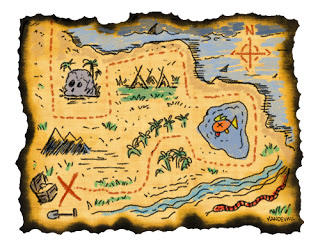When you’re writing fast, tapping out your shitty first draft, you need to have several markers on your imagination’s roadmap. You want an X on your starting point (this marks your hero’s life at your story’s opening and her “want”). You also need an X for the inciting incident that pulls your hero out of her ordinary life and changes or intensifies her “want” (and at this point that X will also mark your antagonist’s intentions, whether your antagonist is a middle school bully or a mafia assassin). It’s good to have an X in the general vicinity of your story’s climax and resolution; and in between (even as you are already drafting) you can fill in an X for your story’s turning points–the most obvious will signify the shifts between act 1, act 2, and act 3.
This way you don’t have to begin with a rock-solid outline (that OL might result in a paper thin story that feels forced). And you don’t need to begin with no-effing-clue where your story is going (because you might be in danger of running out of story gas). Use what you do know or believe to be true to guide you, and trust that the story will shift as your characters take on their full dimensions and drive.
Finally, the other X’s to look for on your imagination’s roadmap: set piece(s). The term (often used in film production) refers to a big scene or series of scenes that mark any dramatic highpoint in your story, most especially the scenes that pay-off in terms of action, revelation, turning point, transition, or resolution. For example, you might have a set piece to mark your story’s midpoint crisis and you might have another set piece to mark your story’s climax.
So, with your rudimentary map in hand, happy writing! And may it lead you to treasure!



This is a helpful post! I already used a structure like the basic Xs, but then resorted to an outline, and, yes, things got a bit stilted. Set pieces are a useful idea.